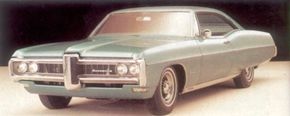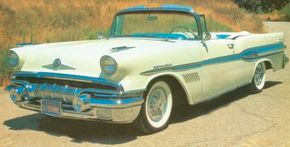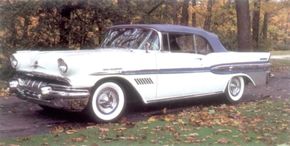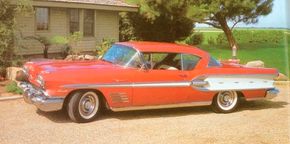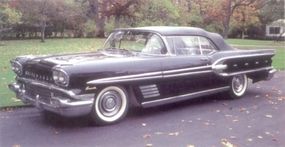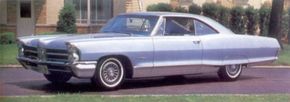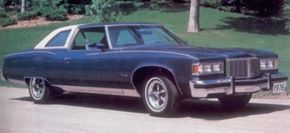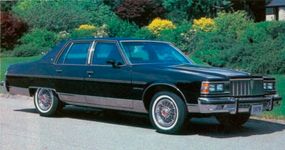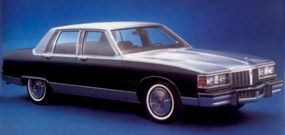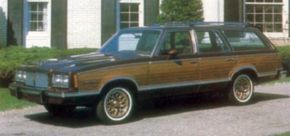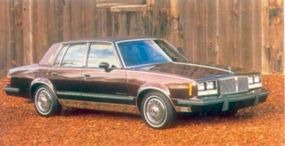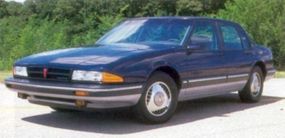Celebrating 30 years of production Pontiacs named for the place that put speed on the map, here is the story of the 1957-1987 Pontiac Bonneville, from a flashy 1950s flyer to the latest in 1980s excitement.
Advertisement
In northeastern Utah, just east of Wendover, lies a 100-square-mile stretch of barren flatland, part of the Great Salt Lake Desert. It's called Bonneville. And ever since Sir Malcolm Campbell's "Bluebird" land speed record car hotfooted across it to crack the 300-mile-an-hour barrier, that name has been synonymous with speed.
Pretty good name for an automobile, especially if you're an automaker striving to establish a performance image. That was exactly the problem facing Pontiac in 1954, when it first latched onto the Bonneville tag. And if its claim was somewhat dubious, at least Eddie Miller had driven a Pontiac-powered lakester there back in 1950.
Pontiac was sixth in industry sales at the time, far behind sister General Motors divisions Buick and Oldsmobile as well as the "low-price three." Though solid value for the money, the cars with the Indian head mascot had fallen behind the times.
For example, Pontiac was still saddled with a side-valve straight eight in 1954, a dubious honor shared only with Packard that year. Worse, the make had become associated with the Social Security set at a time when younger buyers -- the GIs of World War II -- were starting to be a major market influence.
Semon Emil "Bunkie" Knudsen, who became Pontiac's general manager on July 1,1956, accurately summed up the situation with a pithy, now-famous observation: "You can sell an old man a young man's car, but you can never sell a young man an old man's car."
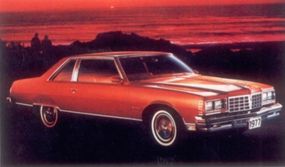
That realization had evidently dawned on division management even before Knudsen arrived, because a series of youthful Motorama specials appeared under the Pontiac banner beginning in 1953. First came the Parisienne, a cut-down 1953 Chieftain Catalina hardtop with landau-style half-roof and fashionable wrapped windshield.
The following year brought the jet-like Strato-Streak, a pillarless hardtop sedan with center-opening doors in the image of certain Lancia models. It also had swiveling front seats, a gimmick Chrysler picked up for some of its 1959 production cars.
Pontiac's 1955 showmobile was the glassy Strato-Star, a two-door with ultra-thin pillars, huge scalloped front fender openings, and little "flippers" cut into the roof to ease entry/exit. Wildest of all was the 1956 Club de Mer, an ultra-low two-seater with a "double-bubble" windshield that made it look like it had been built for the Indy 500.
See the next page to read about the first Bonneville, a 1954 Pontiac show car.
For more information on cars, see:
- Classic Cars
- Muscle Cars
- Sports Cars
- New Car Search
- Used Car Search
Advertisement
